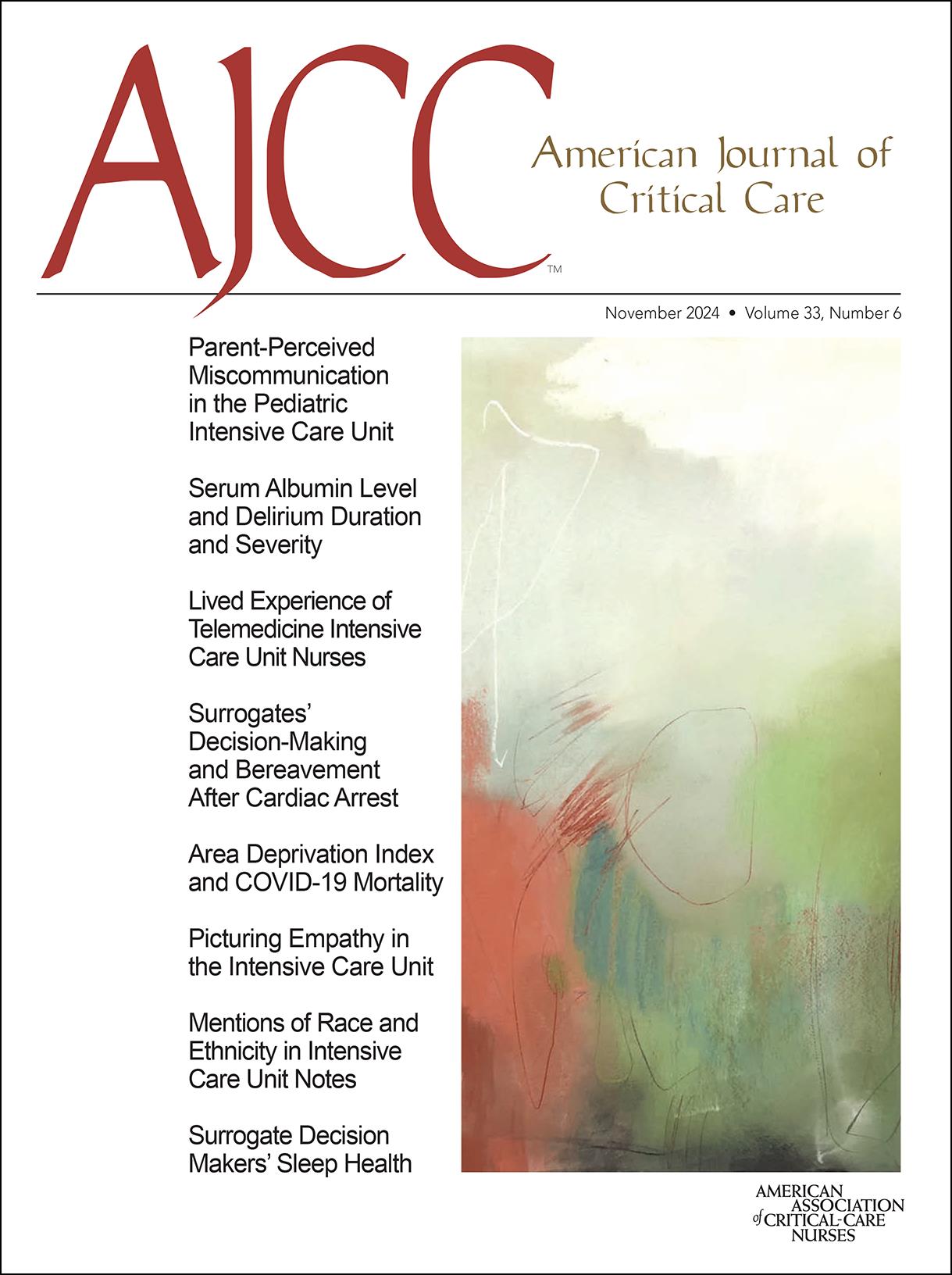American Journal of Critical Care (AJCC)

November 2024
Pages: 455-461
Topics: Collaboration
Population: Adult, Geriatric
Role:
Staff, Manager
Journal Article
Innovative Approaches
Dhruv Shah, MD;
Kuldeep Ghosh, MD;
Robin Singh, MD;
Ivonne Bonfante, BSN, RN;
Josette Nagales, BSN, RN;
Andrew Wuthrich, MBA, MSN, RN, NE-BC, CPAN;
Christopher Wilson, MSN, RN, CNML, CENP, NEA-BC;
Natoushka Trenard, MD, MPH;
Armeen D. Poor, MD
American Journal of Critical Care (AJCC)

November 2024
Pages: 455-461
Topics: Collaboration
Population: Adult, Geriatric
Role:
Staff, Manager
Intensive care unit (ICU) clinicians are at risk for burnout, which can be driven by depersonalization. Photographs of patients in their baseline state of health before ICU admission may enhance the connection between clinicians and patients. The use of patient photographs has not been evaluated in an urban community teaching hospital.
To evaluate whether an interprofessional group of clinicians perceive that patient photographs in the ICU help them connect with patients and enhance empathy.
A prospective observational quality improvement study was performed in the medical ICU of an urban community teaching hospital. Patients’ families could display patients’ photographs in the unit. Registered nurses, physicians, respiratory therapists, and patient care associates completed anonymous surveys.
Families of 21 patients provided photographs; 82 clinicians (47 physicians, 25 nurses, 5 respiratory therapists, and 5 patient care associates) completed surveys. Most clinicians (83%) agreed that the patient’s personality and character were emphasized by photographs, 77% agreed that photographs facilitated communication with the patient and/or family, 89% agreed that patient photographs helped them relate to the patient as an individual, and 76% were not upset by comparing the photograph with the patient. Responses did not significantly differ by clinician type. Survey comments highlighted themes of humanization, fulfillment, and hope.
Patient photographs may enhance connections between clinicians and patients in the ICU, potentially reducing depersonalization and burnout.